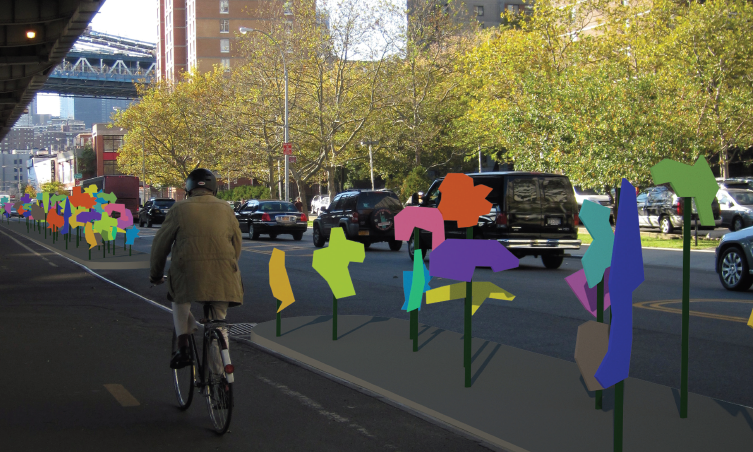
BY MICHAEL OSSORGUINE | The bike lane along the Lower East Side waterfront in the shadow of the F.D.R. viaduct could soon be looking a bit brighter.
State Senator Daniel Squadron has been facilitating meetings with the Hester Street Collaborative and the Department of Transportation, and recently announced that a temporary public art installment is coming to the bike lane along the section of South St. between Rutgers and Montgomery Sts.
The project’s genesis was at a public envisioning meeting last August attended by the Hester Street Collaborative, D.O.T. and Community Board 3. There was a request for proposals [R.F.P.] selection process, followed by months of review by the collaborative team. In the end, designs by artists Samuel Holleran and Chat Travieso were chosen. C.B. 3’s Transportation and Public Safety Committee unanimously supported the final proposal on July 12.
“The selected proposal was rated the highest, but also was most feasible as far as the site goes, regarding safety and the project being a community installation,” Dylan House, of the Hester Street Collaborative, said.
Completion is slated for the middle of this month.
The concrete median that will border the bike lane and support the art was funded by D.O.T., while the art is being paid for by federal grants obtained by Congressmember Jerrold Nadler. The project’s budget is $12,000.
The art will also be a traffic safety measure, separating pedestrians and cyclists from vehicles on South St. In addition, the project ties in to the ongoing transformation of Piers 35 and 42 into new parks.
The art will be brightly colored “geometric forms,” raised a few feet off the ground. Neighborhood volunteers and other participants are the actual designers of each artistic shape, made of wood. Each shape’s size will be based on how long the given resident has lived in the neighborhood. Each shape will be mounted at the same height as its creator.
The installation is currently slated to be displayed for only 11 months, though there are discussions about keeping it longer.

















